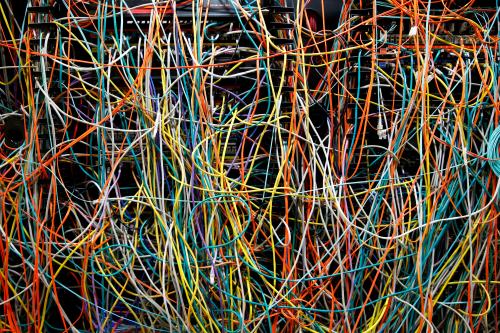Ten years ago, Paul Krugman won the Nobel Prize in Economics, and the World Bank published the World Development Report “Reshaping Economic Geography.” There is never a bad time to win a Nobel Prize, but 2009 might have been the worst year to launch a report on economic geography. It was hard to get people to think about long-term transformations amid the global financial crisis.
Conversely, 2019 may be the best year to talk about economic geography. There is no smoldering crisis, but the world’s economic geography is changing in disconcerting ways. Trade is in retreat, and international flows of capital have dropped to a fraction of what they were a decade ago. In India and Africa, cities are getting clogged with people and pollutants. In Europe and the U.S., the sentiment towards migrants has turned hostile and is deepening political divisions. China has been cementing trade and investment relations with its neighbors, coaxing them into adopting a “Chinese model of development” and making others nervous. New technologies promise—or threaten—to radically alter the shape and size of cities, regions, and international trade.
On the report’s 10th anniversary, we examine three big developments in global economic geography.
1. India’s Sudden Southward Shift
It will take GDP growth rates of about 6 percent sustained over 25 years for India to get to China’s current per capita income. India will not be able to do this without integrating more fully into global markets and by integrating domestic markets. As India does this, its economic geography is changing in favor of the southern states. This is not surprising. The south has done better in providing basic services, building infrastructure, rejuvenating industry, empowering women, and educating girls. Projections of GDP growth over the next decade indicate accelerated rearrangement of activity towards the south. What is instead becoming concentrated in the north is pollution (Figure 1).
Figure 1: Air particulate pollution in 2005 and in 2016
Source: Greenpeace (2018)
But India may soon have to contend with an even more difficult problem. For a long time, political power, population, poverty, and production were concentrated in the north. As production moves southward, political power will inevitably follow. And as the economic center of gravity moves away from traditional centers of power, it could exacerbate regional tensions. India will have to figure out ways to manage them.
2. An Unexpected Anglo-American Populism
The second change in global economic geography has given Europe Brexit and the world President Trump. Both these changes were actually the result of what happened in small parts of the U.K. and the U.S.: the British Midlands and America’s Great Lakes. But they should make us think again about the debate about place-based versus people-centered policies.
Figure 2: Regional convergence in the U.K. until 1997, divergence afterward
Source: Nguyen (2019) NIESR Paper 010
In 2016, the British voted narrowly against staying in the European Union, swung by Great Britain’s Midlands where two out of three people voted to leave. Between 1966 and 1996, London, the South East, and the North remained richer than the rest, but other regions were catching up. The exception was the Midlands, which steadily lost ground. Between 1997 and 2016, London pulled ahead, the South East maintained an edge, but every other region lost ground. The East Midlands did especially badly (Figure 2). By the time of the referendum, nine of northern Europe’s 10 poorest regions were in the U.K.; six were in the Midlands. The scapegoats in the election were migrants from Central Europe who had benefited from the European single market and the jobs in London. Older British workers in the Midlands had not.
The story in the U.S. is the same. Between 1980 and 2016, the Great Lakes Region lost ground in regional economic vitality—income, poverty, unemployment, labor force participation, life expectancy, and housing vacancy rates—with Wisconsin, Michigan, and western Pennsylvania performing especially badly (Figure 3). In 2016, these three states would vote Trump into office.
Figure 3: Regional incomes in the U.S. since the Great Depression
Source: Nunn, Parsons and Shambaugh (2018)
As in Britain, the scapegoats in the U.S. have been immigrants. When we were writing the World Development Report, we might have given too much attention to the economics of migration, and not enough to its politics.
3. China’s Extraordinary External Outreach
The third big change is the rise of China’s influence in the developing world. Back in 2009, we paid a lot of attention to what was going on inside China. We should have paid more attention to China’s activities abroad.
While China has many reasons to expand its outreach, the state of its finances may be the most important. China’s banks have assets of about $35 trillion—three times China’s GDP—making it the biggest banking system in the world. Lending by China’s banks abroad is less than $1 trillion or just 3 percent of total assets until 2016, but it is causing big headaches.
Chinese money has financed investments in energy and transport—sorely deficient in Asia and Africa—but the fear is that the projects are not always chosen well. Researchers estimate that since 1997, ineffective investments at home have cost China $10.8 trillion. Chinese banks are now holding a lot of bad debt, and foreign borrowers should expect the Chinese government to take care that the loans will be repaid. Foreign governments should be doubly careful about how they use the money.
Figure 4: China’s banks will be looking for profits abroad
High Stakes
A new approach to development has been gaining popularity. The orthodox, or Western, way put institutions first and infrastructure second—“institutions for the ages with infrastructure that is good enough.” The Chinese approach can be seen as reversing the order—“infrastructure for the ages with institutions that are good enough.” The World Development Report advocated for orthodoxy: first institutions, then infrastructure, and finally, if necessary, targeted interventions. It is time to assess whether this should be corrected or qualified.
In any case, the altered trajectory of India’s urbanization, the rise of populism in the world’s two leading market economies, and the noisy regional integration initiated by China should encourage us to rethink the rules of economic geography. Three big questions hang in the balance: how urbanization can best be made quick and clean, what should be done to reduce regional disparities in welfare, and whether more international integration is always a good thing.








Commentary
Economic geography bites back
April 24, 2019